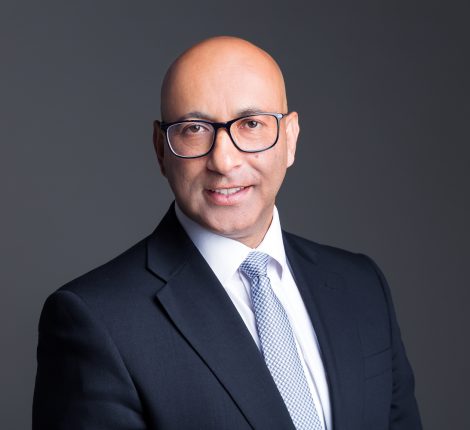Bridging Dubai’s housing gap with low-cost homes
While Dubai has made significant inroads in luxury and mid-scale housing development, a parallel push supported by both the government and private developers is being made to cater for the housing needs of low-income households. Last month, the Dubai government announced a plan to introduce low-cost housing for both UAE nationals and expats, which will further address a gap in the residential segment across all income classes.
The new policy may include two programmes: one is a collaboration with real estate developers to provide housing for low-income families and the other is a move to refurbish old residential areas in Dubai.
The low-cost housing projects will primarily target households with an income of Dh15,000-Dh20,000 per month, although some say the market could be expanded to those earning below Dh10,000. “We have already seen under-construction projects in the new areas offering apartments in the range of Dh300,000-Dh400,000. We are encouraging more developers to go this route,” Marwan Bin Ghalita, CEO of the Real Estate Regulatory Agency (Rera), tells PW. “The new trend of low-cost housing will continue and the market will see more units entering below the Dh650,000–Dh700,000 mark.”
Sailesh Jatania, chief operating officer of Gemini Property Developers, believes real demand can be generated by encouraging low-income housing. “Low-cost housing is essentially one level below the affordable/mid-market housing segment,” says Jatania. “While affordable housing is targeted at those with salaries of at least Dh20,000 per month, low-cost housing is targeted at even lower income-bracket employees, generally a family income of less than Dh10,000 per month.
“Every geographic market has different customer segments and low-income housing has high demand in large countries such as India, the UK, USA, etc. Mid-market or affordable housing is the mainstay for most property markets. In Dubai, there was no emphasis on low-cost housing, but with an increase in the working population looking at a long-term career in Dubai, this segment has become very popular in recent times.”
Affordable housing
Low-cost housing and affordable housing are often identified as two separate sectors when they are in fact linked, says Ian Albert, regional director of Colliers International Middle East and North Africa (Mena). “Low-cost refers to the type of construction material or construction process used, while affordable relates to the ability of people to pay either rental or mortgages.
“The nature of affordability depends on the income level, so a wealthy individual or family can still be looking for affordable housing, but within their specific affordability range. Social housing is aimed at that segment of society that needs financial support, either through direct payment to the individual or family, or discounted rent payment terms to the property owner.”
Albert says the introduction of low-cost housing construction methods could have a positive impact on the completed properties, as savings are passed on to occupiers through reduced rentals or purchase prices.
A research by JLL has shown that only 20 per cent of housing supply delivered in Dubai over the past two years is affordable to average income earners, who constitute 40 per cent of the population. “The Dubai government has recognised the importance of providing more affordable housing, but the market remains heavily focused on a more up-market product that is not affordable to the majority of those living and working in the city,” says Craig Plumb, head of research at JLL Mena.
“Dubai is seeking to establish itself as a major commercial hub between London in the West and Singapore in the East, serving a vast area of Africa, South and Central Asia and Europe. The city needs to provide a sufficient supply of affordable housing for middle-income workers to succeed in this ambition.”
Plumb points out that most of the affordable housing supply is being delivered in Sharjah and the northern emirates, creating “environmental and social problems resulting from excessive commute times”.
He adds: “Almost 40 per cent of households in the UAE have a combined monthly salary of Dh10,000-Dh30,000, and it is this section of the population that JLL defines as middle income.”
Plumb says the main difference between low-cost and middle-income housing is the delivery mechanism. “Low-cost or social housing is provided by the state or by employers for their staff, while middle-income housing is either purchased or rented directly by the end user,” he explains.
The challenge of providing sufficient levels of affordable housing is a global problem says Plumb. “The approaches taken vary significantly between cities, but an important lesson is that the private sector can rarely be left to provide a sufficient supply of this housing without some form of government intervention.”
New approach
Some developers are turning to modern technologies to change the way homes are built in the UAE. One of the most exciting new technologies is 3D printing, which allows homes to be constructed much more quickly and more cheaply than traditional construction techniques, which are extremely labour intensive. “We expect to see much more use made of these new technologies in the delivery of affordable housing over the next 10 years,” says Plumb. “Other techniques that developers are using to reduce costs include modular construction, smaller units and higher densities.”
Dubai still has a very high percentage of the expat population that cannot afford to buy their own homes, says Rizwan Sajan, founder and chairman of Danube Group. “It indirectly means that this population would invest their savings in their native country, although they would continue living in Dubai due to various advantages the city provides, such as employment, lifestyle, security and much more.”
Therefore, catering for the demand of such consumers will be crucial for the sector moving forward.
Building low cost
Sajan notes that low-income earners are consumers who evaluate the product, total investment and associated risks in a more detailed manner. They also have very high expectations. “From a consumer point of view, the most critical aspect of designing low-income housing is the internal layout and careful selection of finishing material,” he says. “The space has to be efficiently planned to meet the requirements of the occupant, trimming down on some of the less important areas and adding to the living and storage facilities. The finishing materials have to be cost effective, durable, easy to maintain in case of replacement and attractive to look at.
“The budget for such projects is tighter. Hence, it requires a lot of research and development to ensure the right mix is achieved to meet all expectations of the purchaser.”
Talking about the construction cost, he adds, “The cost of labour will remain more or less constant for any construction. In the case of low-income housing, since you need to achieve rock-bottom value, every cost needs to contribute to savings, which will result in truly low-cost housing. While land price and raw materials will remain the biggest contributor, appropriate regulations facilitating low-rise and low-density development are equally important.
“Subsidy on fees and registration cost, along with a more liberal financing scheme, can add to the cause. This can be licensed only for low-income housing by special registration with the government to ensure that the facilities are not misused for regular projects. The regulation must also cap the purchase to one house per family to control unnecessary inflation.”
Change in outlook
Mohammad Bin Ghatti, CEO and head of architecture at Binghatti Developers, says that in the past, existing developments targeting the mid-segment were often branded as low quality and were far from the city centre. He says the trend is changing as many high-quality properties are emerging in areas such as Dubai Silicon Oasis, Jumeirah Village Circle and Dubailand, as more developers see the value of developing projects that the average resident can afford.
“The Dubai government has contributed to this shift in developers’ focus towards mid-segment property,” says Bin Ghatti. “Large-scale infrastructure projects are under way throughout Dubai, with the intention of attracting residents from neighbouring emirates, who may have previously been priced out of the Dubai market.”
There are also discussions for the Dubai government to introduce mandatory affordable housing quotas in all new residential developments, similar to what’s being done in many metropolises around the world, where 15-20 per cent of new developments are dedicated to affordable housing. “Private-public partnerships will certainly be needed to encourage and incentivise private developers to enter the mid-segment of the property market,” says Bin Ghatti.
“We are excited for the new opportunities and initiatives by the Dubai government in promoting low-income and affordable housing.”
Bin Ghatti also believes the market for low-cost housing should be aggressively expanded to include a bigger proportion of residents. “The main difference between low-income housing and mid-segment housing is the financial threshold necessary to acquire the property,” he says. “For a property to be truly considered low-cost, it should be attainable for anyone with an income between Dh5,000 and Dh7,000 per month.”




